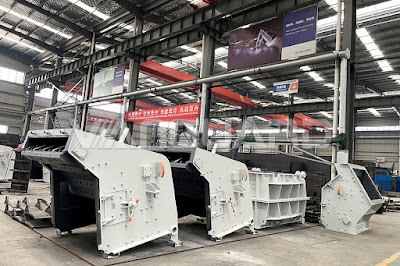Choosing the right impact plate (or impact liner) for an impact crusher is crucial to ensure the efficient operation of the crusher and to extend its service life. The impact plate directly affects the crusher's performance, including the crushed product's size and quality, energy consumption, and maintenance costs. Here are the key factors to consider when selecting an impact plate for an impact crusher:

1. Material Type
Hardness of Material: The type of material being crushed greatly influences the choice of the impact plate. For hard, abrasive materials (like granite, basalt, or iron ore), the impact plate should be made of high-quality, wear-resistant materials, such as high-chromium cast iron or martensitic steel. For softer materials, a less durable plate may suffice.
Feed Material Characteristics: Consider the material's moisture content, size distribution, and abrasiveness. For example, sticky or wet materials may require different impact plates or crusher configurations to prevent clogging or excessive wear.
2. Material of the Impact Plate
High Chromium Cast Iron: This is one of the most common materials for impact plates due to its excellent wear resistance. It is ideal for crushing hard, abrasive materials.
Martensitic Steel: This material has a higher toughness than high chromium cast iron and is often used for secondary and tertiary crushing applications. It provides a good balance of wear resistance and fracture toughness.
Ceramic or Ceramic Composites: In some cases, ceramic coatings are used to improve wear resistance, especially in highly abrasive applications.
Hardfacing Materials: In some cases, the impact plates may undergo hardfacing or welding of wear-resistant materials to extend their life.

3. Impact Plate Design
Thickness and Shape: The thickness of the impact plate can affect both the wear life and the crushing efficiency. Thicker plates may last longer but may also affect the overall performance of the crusher. The design should optimize material flow, minimize blockages, and enhance impact energy distribution.
Replaceability: Choose impact plates that are easy to replace and maintain. This helps reduce downtime during maintenance and ensures the crusher continues to operate at peak efficiency.
Angle and Position: The angle at which the impact plate is positioned within the crusher affects the trajectory and impact of the material being crushed. Proper alignment and design can lead to more efficient size reduction and fewer blockages.
4. Wear Resistance and Durability
Wear Rate: Consider how quickly the material will wear the impact plates. In high-wear applications, the impact plate material should have high hardness and impact resistance.
Reversible Plates: Some impact plates are reversible, meaning they can be turned around and used on the other side to double their useful life. This is a cost-effective feature in some cases.

5. Cost vs. Performance
There is a trade-off between the cost of the impact plate and its performance. While high-quality, durable materials may have a higher initial cost, they can save money over time by reducing the frequency of replacements and improving operational efficiency.
6. Environmental and Operating Conditions
Temperature: Operating temperature can influence the material choice. In very high or low temperatures, certain materials may become more brittle or less resistant to wear.
Operating Speed: High-speed crushers may require impact plates that can withstand more intense impact forces. The plate material should be selected to match the specific operational conditions.

When choosing the impact plate for an impact crusher, the material type, durability, design, and cost all play significant roles. For harder, more abrasive materials, wear-resistant materials like high chromium cast iron or martensitic steel are recommended. It is essential to balance cost with performance, considering factors like the wear rate, ease of replacement, and specific operating conditions to ensure efficient and long-lasting operation of the crusher.
















